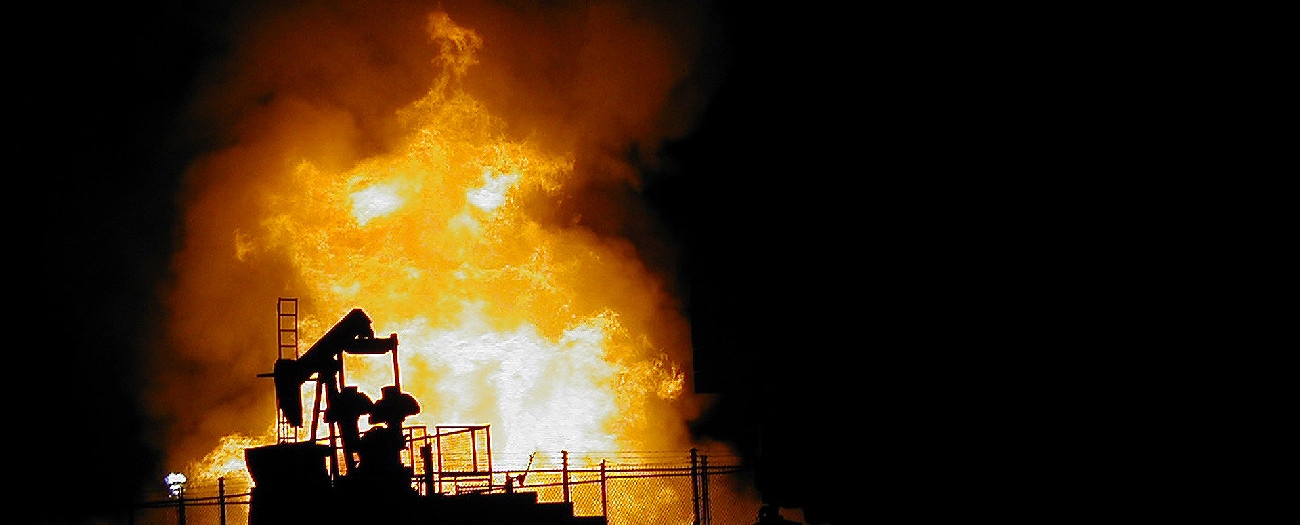A glance at the heart of an operation, and how AER keeps its finger on the pulse
Alberta - February 05, 2017Dissecting an oil and gas operation is no small undertaking.
Wells reach deep into the earth to pull out oil and natural gas. Drilling and servicing operations have many moving parts and unique variables that are affected by myriad factors, making each operation different from the last.
But they do have one thing in common: each is vulnerable to operation failures known as blowouts.
Diagnosis: blowout
Popularized by images of industry geysers spewing black smoke or of rig skeletons engulfed in flame, a blowout occurs when oil, gas, or water flows uncontrolled from a well, either above or below ground. Sometimes, though, a blowout can manifest as pooling of water or oil around the wellhead.
Often, we think of blowouts as infernos on the horizon—a storm of smoke and fire sprawling across the sky, such as was seen during Alberta’s historic Atlantic No. 3 blowout. When a blowout catches fire, it can create a dangerous, difficult-to-manage environment. However, sometimes the fire is set intentionally to alleviate the danger.
When a blowout occurs on a sour gas (i.e., gas containing hydrogen sulphide [H2S]) well above ground, sometimes the best solution is to ignite the gas. Ignition converts the H2S to the less-toxic sulphur dioxide, which disperses more quickly and poses less risk.
The symptoms
Before a blowout occurs, there are lots of warning signs. The most important indicator of a potential blowout is called a “kick.”
The term kick is used when a formation fluid such as water, gas, or oil enters the wellbore unexpectedly. This happens if the fluid—known as drilling mud—used to prevent formation fluids from exiting the wellbore is not heavy enough to counter the formation pressure.
However, a kick can still be controlled, and any formation fluid that entered the wellbore can be circulated out.
“It’s when a kick gets away from you that you have a problem,” says Paul Saulnier, an operation and compliance specialist at the Alberta Energy Regulator (AER). “But that’s not to say that there aren’t solutions at surface to manage the issue.”
When a kick occurs, the rig crew will activate mechanical barriers, known as blowout preventers, installed at surface. But, if the well is not shut in time, the kick can quickly escalate into a blowout.
Docs on scene
Although blowouts can happen during drilling or servicing operations, historically most blowouts have occurred because of a casing failure, operator error, inadequate well design, or third-party damage, including wellhead strikes or vandalism.
To make sure wells begin their lifecycle with a clean bill of health, the AER requires companies to adhere to Directive 036: Drilling Blowout Prevention Requirements and Procedures and Directive 037: Service Rig Inspection Manual, which detail the equipment and procedures to follow when drilling and servicing wells in Alberta.
But the AER doesn’t just prescribe a fix.
In addition to the AER inspectors who inspect wells to make sure they comply with the conditions of Directive 036, the AER’s Field Incident Response Support Team is ready to arrive on scene to help manage a blowout and other incidents.
The cure
There are few ways to regain control of a well after a blowout—but it isn’t impossible.
Operators can install additional wellheads or replace the existing wellhead to shut-in the operation. This helps to stabilize the pressure or allow for the circulation of control fluids—think of it as an IV dripping drilling mud or water into the well to help it recover.
If this fails, an operator can drill a relief well, which pumps drilling mud and cement into the formation from which oil or gas is escaping to bring the blowout under control.
Long-term treatment
We know more about treating a blowout now than ever before, and fewer blowouts occur in Alberta today than they once did. In 2016, there were no drilling blowouts, one servicing blowout, and five blowouts that occurred because of casing failure, operator error, inadequate well design, or third-party damage, including wellhead strikes or vandalism.
Each experience helps shape regulatory development today to make operations safer than ever.
Natalie Brodych, Writer


